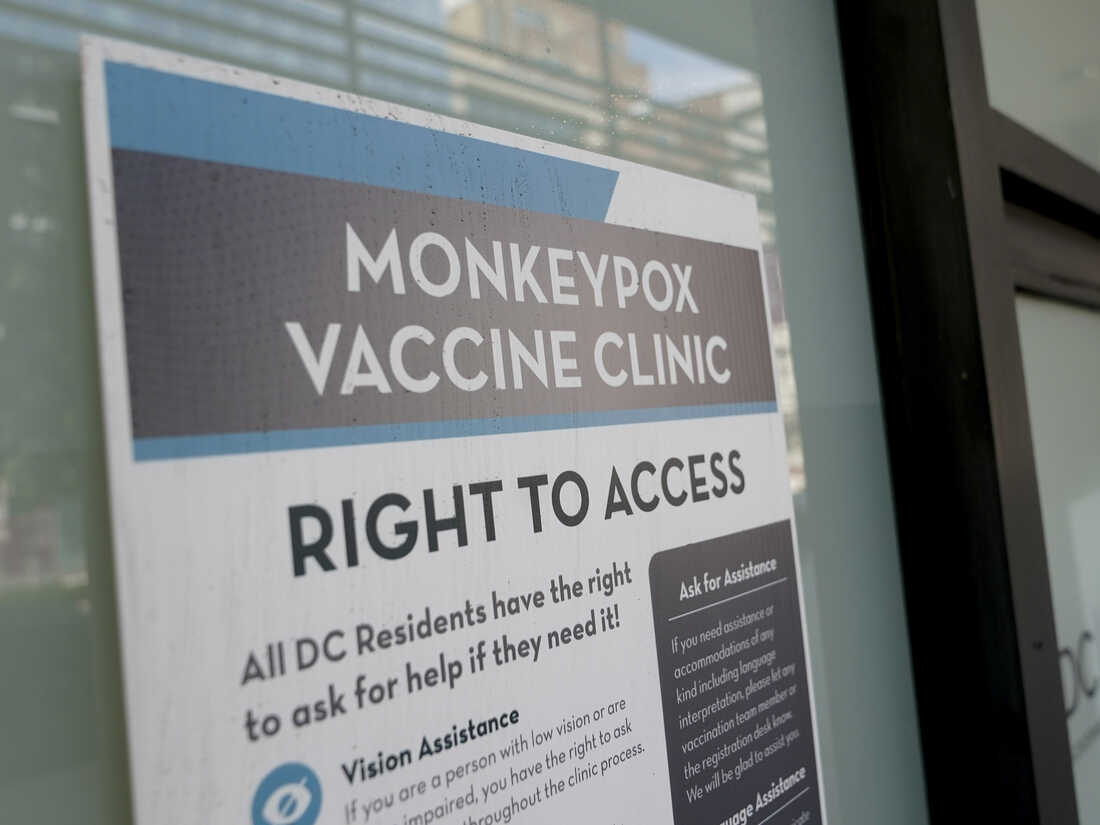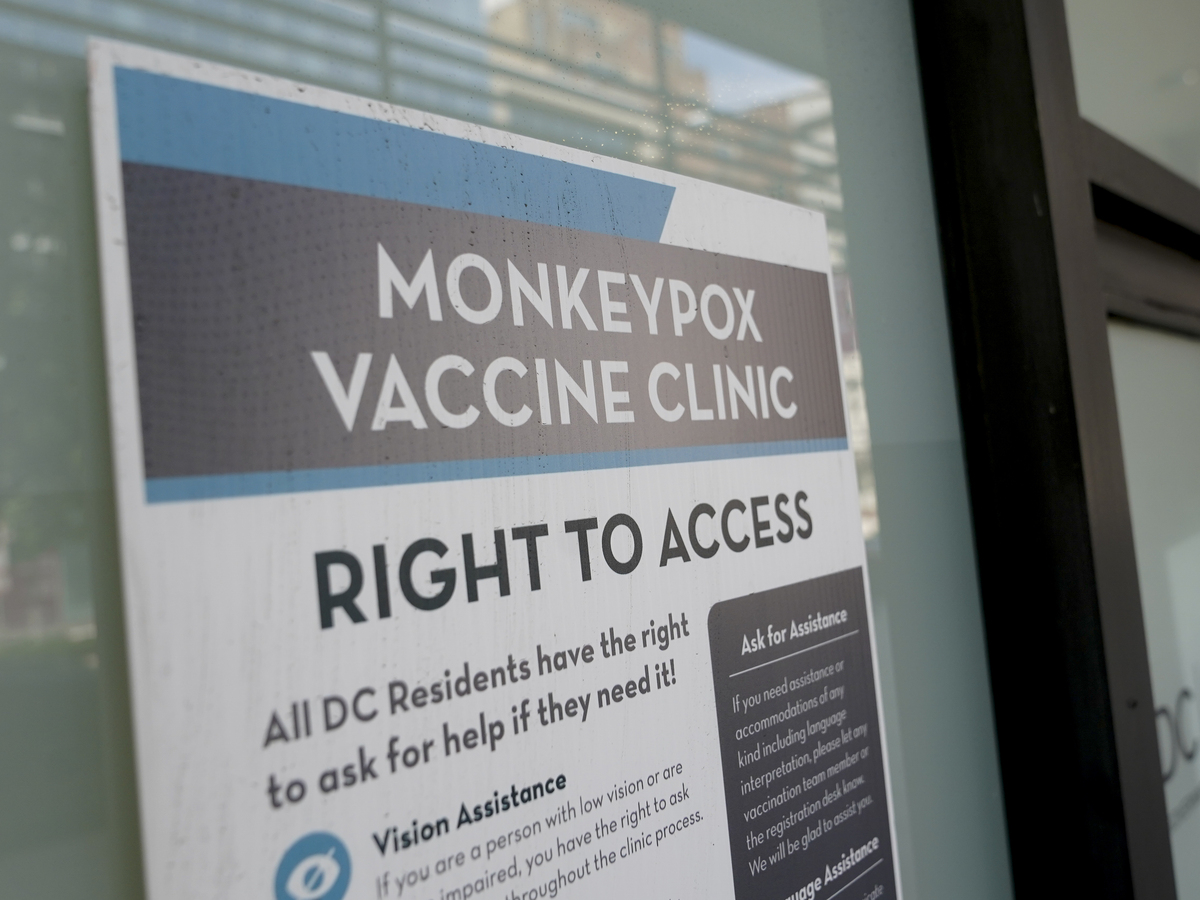
[ad_1]

The monkeypox outbreak is growing in the U.S. and vaccines remain in short supply.
Patrick Semansky/AP
hide caption
toggle caption
Patrick Semansky/AP

The monkeypox outbreak is growing in the U.S. and vaccines remain in short supply.
Patrick Semansky/AP
With the monkeypox vaccine still in short supply, the Biden administration is changing how the vaccine is administered in order to stretch its limited number of doses.
On Tuesday afternoon, federal health officials announced their decision to allow the JYNNEOS vaccine to be administered between layers of skin — what’s known as an intradermal injection — rather than into the fat as is currently done.
By offering the shots in this way, only a fifth of the full dose is needed for each person.
To make the change, the Food and Drug Administration issued an Emergency Use Authorization to authorize the new dosing and injection strategy for the vaccine. (This follows last week’s decision by the U.S. Department of Health and Human Services to declare monkeypox a Public Health Emergency, and an additional declaration today.)
“In recent weeks the monkeypox virus has continued to spread at a rate that has made it clear our current vaccine supply will not meet the current demand,” said FDA Commissioner Dr. Robert M. Califf in a press release.
Currently, the U.S. stores of monkeypox vaccine are insufficient to contain the growing outbreak. So far, there have been about 9,000 confirmed cases of monkeypox in the U.S., and that’s likely an undercount given ongoing testing challenges.
Even with the change, a person will still need to receive two doses of the vaccine, each given four weeks apart.
During this current outbreak, the vast majority of cases in the U.S. are occurring in gay and queer sexual networks, primarily among men who have sex with men. Most cases have been traced back to male-to-male sexual contact, according to the latest data from the Centers for Disease Control and Prevention.
About 1.6 to 1.7 million people are considered at highest risk for the disease, but only about 1.1 million vaccine doses have been available in the U.S. — enough to cover less than half of that population with the two-dose regimen – due to the expiration of vaccine reserves and delays in ordering replacements.
“Just changing the technique of the application, you triple, quadruple your supply of vaccine available,” says Dr. Jon Andrus, an infectious disease specialist at George Washington University. “So it makes sense to go forward with it.”
The skin is home to a number of immune cells that trigger a potentially better immune response, he says.
But this alternate approach has its challenges: it’s harder to administer a vaccine in between layers of skin, and requires special training. Although this method has worked for polio and yellow fever, evidence that it will work for monkeypox is based on a single 2015 study.
“Right now, we need a lot of vaccine in a very short time period if we’re going to get in front of this virus,” says Anne Rimoin, an epidemiologist at UCLA. “And these vaccines are likely going to be very effective.”
Rimoin adds that we must remember this is a global outbreak. The notion that something happening in a remote part of the world doesn’t affect us here “needs to be dispelled as soon as possible,” she says. “We really do need to be reinforcing our health systems [and] our surveillance systems locally, but also helping our partners in low-resource settings be able to do this globally.”
[ad_2]
Source link